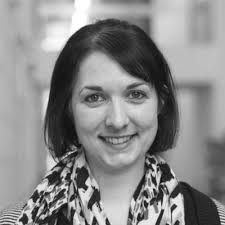
Dr Frances A. Kamm – Academic and Lecturer in Film Studies
I recently (and virtually) sat down with Dr Frances A. Kamm, a lecturer and academic in Film at the University of Kent and one of the FMC Research Group’s co-directors, to understand a bit more about her current and recent work.
I asked: how would you describe the main discipline within your research?
“It’s twofold. It’s film technology and, specifically, special effects. And the other side of my research has traditionally been in the Gothic or, more specifically, in gendered representations of Gothic on screen. The thread between them, that has always interested me, is depictions of the body”
Dr Kamm’s publication history mirrors this dual interest of themes. Her PhD thesis, entitled ‘The Technological Uncanny and the Representation of the Body in Early and Digital Cinema’ (2015) explores the link between early and digital cinema’s depictions of the human body, and how their contemporary audiences reacted to said representations.
“I published an article which was all about how motion capture is used in Robert Zemeckis’s A Christmas Carol. It’s the one with Jim Carrey portraying Scrooge using motion capture – a technology that’s interested me for a very long while as it was a fundamental part of my PhD thesis several years ago. And in that article I discuss how motion capture (or, as it was known by that point, performance capture) is used in order to create the human figures that we see on the screen, contextualised within the larger landscape of previous A Christmas Carol adaptations. I look at how this fits into a much longer lineage of using certain visual effects in order to depict a story which is about showing both living and dead bodies – whether that’s on a stage or on the cinema screen”
On the other side of Kamm’s main research interests, concerning the Gothic genre, she published a paper in 2019 entitled ‘The Female Gothic and the Supernatural in What Lies Beneath’.
“With What Lies Beneath I’m interested in a very specific Gothic tradition which is called the Female Gothic. This has its origins in the literary Gothic and the Gothic novel, emerging in the 18th century. These stories focus on a female character – the Gothic heroine – who is usually imperilled within a domestic but scary location, such as a house. In the chapter on What Lies Beneath I analyse how the film uses some of those conventions, but also how it’s changing and reworking them as well. What Lies Beneath is a very self-conscious film: it’s definitely evoking earlier films which are part of the cinematic Female Gothic tradition (such as Rebecca, 1940). But the major difference here is the use of the supernatural. I discuss how, in quite a change from these earlier Female Gothic narratives where the ghosts aren’t real, in What Lies Beneath, arguably, they very much are.”
We began talking about the research Kamm is currently working on and she told me that her main aim is to bring together her research on visual effects/motion capture technologies into a book. In the meantime, Kamm co-edited a book entitled Gothic Heroines on Screen: Representation, Interpretation, and Feminist Inquiry and has also just contributed a chapter within another edited collection on Alien (1979); a publication arising from a conference celebrating the film’s recent 40th anniversary.
“The most recent chapter builds on the ideas I presented in my own edited collection (which focused on Aliens from 1986) but here I broaden the focus to think about the Alien franchise as a whole. One of my central arguments in that chapter is how the Female Gothic is historically contemporaneous to the release of Alien in the 1970s. So, in the 1970s, there was a bit of a resurgence in interest in the Female Gothic as a literary tradition and what’s really interesting is how you can see that translating onto the cinema screen. The Female Gothic, as a genre, taps into issues concerning women and feminism and, of course, in the 70s you also have the impact of radical feminism and second wave feminist movements. Alien, as a film, very much taps into that, as well as other issues. So it’s perhaps unsurprising that the Female Gothic and Alien are quite complementary. I also argue how you can see the tropes and conventions from the Female Gothic echoing across the Alien franchise as a whole.”
Finally, with restrictions in place for face-to-face university events, I asked Dr Kamm what she is looking forward to within the research group over the remainder of the academic year.
“The most important thing right now for a research group to do – now more than ever! – is to remind its members that we do have this community which is there to help, celebrate and inspire research. Also, even though we are living in challenging times, one of the advantages of communicating through screens is that it collapses those geographical boundaries that have existed before. If we couldn’t have invited that speaker coming from, for example, Australia, Germany or the US in the past, it now becomes a lot easier to do so. So that’s what I’m looking forward to: celebrating and fostering that research community, while continuing to hear new ideas and voices from the outside too.”
Interview and text by Bartholomew Hall.